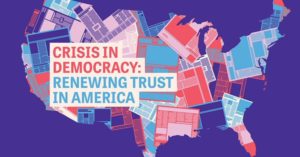Brookings
February 7, 2019“State and local government total expenditures amount to $2.9 trillion in the United States. While this is less than the federal government’s $4.3 trillion of expenditures, nearly two-thirds of federal total expenditures are transfers (either to individuals or state and local governments). This means that state and local governments have in some respects a more prominent role in decision-making than the federal government. Indeed, state and local governments make key investment decisions—about infrastructure, education, and many other areas—that help determine the long-run capacity of the entire economy.
Mobility across states has declined sharply in the United States, and one reason appears to be that land-use restrictions in economically successful regions make it difficult for many workers to move to these locations. Similarly, transportation resources are not always efficiently allocated, making it more difficult for workers to access high-quality jobs.
This document provides context for policy proposals in the form of nine economic facts about how state and local policies matter for growth. These facts highlight how rigorous cost-benefit analysis, optimal transportation policy, and land-use rules can affect access to opportunity.”
-Brookings
Make a difference.
Each one of us can make a small but critical contribution to the future by taking care of the present now-each in our own unique way-ethically, lovingly, together with others where we work, wherever we can make a difference. It is a great adventure, a radical act of sanity & love.
-Jon Kabat-Zinn, Ph.D.
Dr Kabat-Zinn is a scientist, writer, and meditation teacher. He is Professor of Medicine emeritus at the University of Massachusetts Medical School.
The Aspen Institute & Knight Foundation
News organization, technology companies, citizens must take resposnsibility for restoring trust in democracy.
It is a daunting task that the Commission has undertaken, and none, in our minds, could be more important.
It is a daunting task that the Commission has undertaken, and none, in our minds, could be more important. What should Americans do to restore trust in our democratic republic and the media that serve it and us? More specifically, what can our leaders, our media and our citizens do to better understand the ‘other,’ to distinguish between truth and disinformation and to govern ourselves fairly and effectively?
This Commission report focuses on the intersection of the distrust in American democratic institutions and in the journalistic media. These are difficult times, calling for strong responses to the dilemmas set forth below.
-The co-chairs
http://csreports.aspeninstitute.org/Knight-Commission-TMD/2019/report
~
Knight Foundation is a national foundation with strong local roots. We invest in journalism, in the arts, and in the success of cities where brothers John S. and James L. Knight once published newspapers. Our goal is to foster informed and engaged communities, which we believe are essential for a healthy democracy.
~
The Aspen Institute is a nonpartisan forum for values-based leadership and the exchange of ideas.
Redemption.
Instead of covering up a previous admission for his despicable college behavior to save his governor seat, the governor of Virginia could have apologized again, after his first direct apologetic response, and then in public forum ask that he be forgiven; then, in turn, allow him to use this time, his platform, for redemption and cultural change for his community, state, and country. Invite people of color to establish ongoing state committees to address race and racial behaviors/profiling.
How many of us have looked at our yearbooks from 35 years prior, or remember the pictures we took part? It is not an excuse. It is reality. The Governor’s fundamental mistake is he did not own his behavior, instead tried to cover up an act he admitted to committing. He wasted and confused a powerful moment of redemption for change.
Now other photos similar in racist behavior are surfacing as well as self-admissions about racial hate/profiling [actor Liam Neeson].
Instead of resigning or terminating positions, can we instead use this time to dialogue on national and community platforms about misguided behaviors, complicit biases, needed changes in language and behavior? Those knowingly guilty of past racial behaviors and rhetoric could add to a culture of redemption and change. This is not a political issue. This is a humanitarian issue. It is invasive and prolific and dangerous. And it continues. We can’t resign this away. Retribution falls to all of us who are complicit in our ignorance and our response.
Blackface is still practiced. One personal anecdote. On a small mid-western liberal arts college campus in 2018 a young student at my daughter’s university dressed in blackface and attended a public event. She later was deactivated from her sorority and forbidden to participate in her graduation ceremony. This is only one event. And it was just last year.
Honesty, dialogue, and redemption. This won’t change until we do.
Father Richard Rohr:
We need to draw close to the pain of the world and allow it to radically change perspective (not push it away).
Embrace imperfection and injustices to allow these situations to change from the inside out.
Reality has a cruciform pattern.
Reality is filled with contradictions.
We have an injury on the body politic in this country, an injury that white Americans inflicted on people of color for generations through oppression and murder. And it continues.
We can not walk away from this…’resign’ it. We must embrace it to end it.
Again,
embrace imperfection and injustices to allow these situations to change from the inside out.
AP
“Racist history of blackface began in the 1830’s.”
A racist photo from a 1984 yearbook threatens to end Virginia Gov. Ralph Northam’s political career. The photo shows two people: one in blackface and one wearing a Ku Klux Klan hood and robe. The image generated intense pressure for Northam to resign and offered the latest example of a prominent white person facing harsh criticism for wearing blackface. Here’s a look at the practice and its history.
